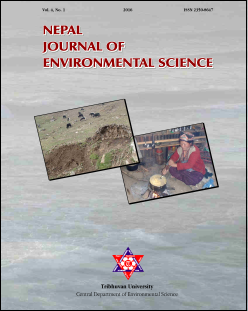Landslide susceptibility mapping of Phewa catchment using multilayer perceptron artificial neural network
DOI:
https://doi.org/10.3126/njes.v4i0.22718Keywords:
Artificial neural network, GIS, Landslide susceptibilityAbstract
The aim of this study was to prepare landslide susceptibility mapping technique using multilayer perceptron artificial neural network (MLP-ANN) and then to apply this method to Phewa catchment in western Nepal. To determine the effect of causative factors on landslides, data layers of aspect, elevation, slope, internal relief, slope shape, drainage proximity, drainage density, stream power index, topographic wetness index, sediment transport index, land cover and geology were analysed in R-statistical package and final map was produced using geographical information system environment. A GIS-based landslide inventory map of 88 landslide locations was prepared using data from previous reports and satellite image interpretation. A MLP-ANN model was generated from a training set consisting of ~70% randomly selected landslide in the inventory map, with the remaining ~30% landslides used for validation of the susceptibility map. According to analysis, the model had a success rate of 82.1% and the prediction accuracy of 91.4%, indicating a good performance.
Downloads
Downloads
Published
How to Cite
Issue
Section
License
This license enables reusers to distribute, remix, adapt, and build upon the material in any medium or format for noncommercial purposes only, and only so long as attribution is given to the creator.

